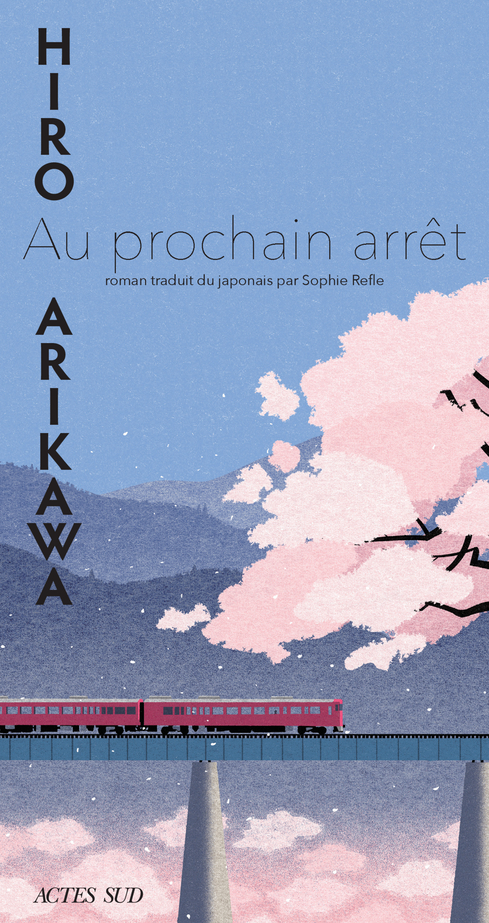‘At the Next Stop’, an Invitation to Travel
In this novel, Hiro Arikawa distils fragments of existence that share one common denominator: a train journey.

© Actes Sud
The plot of Au prochain arrêt (‘At the Next Stop’) follows the train route connecting Takarazuka, in the suburbs of Osaka, and Nishinomiya, along the coast of the Seto Inland Sea. Here there are no high-speed shinkansen; instead, the passengers board a little slow train with red coaches. The trip is punctuated by eight station stops, each of which constitutes a chapter in Hiro Arikawa’s novel.
While the train is moving, the travellers sitting in the coaches become the protagonists in this contemplative novel. As the landscape scrolls past the windows, eyes meet, people speak more freely, and friendships form. The soft seats welcome shy, awkward students, little girls with a slightly nasty streak, grandmothers full of good advice, women who have been victims of domestic violence, and regular visitors to the same library who dare to exchange a few words for the first time.
Moments of existence
Hiro Arikawa, known primarily for her novel The Travelling Cat Chronicles, invites the reader on a journey through these moments of existence that implicitly sketch the outlines of Japanese society. This is not just a train journey, because a look, a word, a sigh can have much more of an impact than one might think. This is what the reader discovers in the second part of the book, when Hiro Arikawa summons her travellers once more for the return trip. The landscape through the windows has changed with the seasons, as have the protagonists, who are no longer exactly the same, nor completely different. The reader has eight stops during which to understand why.
Au prochain arrêt (‘At the Next Stop’) (2021), a novel by Hiro Arikawa, is published by Actes Sud (not currently available in English).
TRENDING
-
A House from the Taisho Era Reveals Its Secrets
While visiting an abandoned building, Hamish Campbell discovered photographs the owner had taken of the place in the 1920s.

-
The Taboo-Breaking Erotica of Toshio Saeki
The master of the 1970s Japanese avant-garde reimagined his most iconic artworks for a limited box set with silkscreen artist Fumie Taniyama.

-
With Meisa Fujishiro, Tokyo's Nudes Stand Tall
In the series 'Sketches of Tokyo', the photographer revisits the genre by bringing it face to face with the capital's architecture.

-
Masahisa Fukase's Family Portraits
In his series ‘Family’, the photographer compiles surprising photos in which he questions death, the inescapable.

-
Hajime Sorayama's Futuristic Eroticism
The illustrator is the pioneer for a form of hyperrealism that combines sensuality and technology and depicts sexualised robots.





